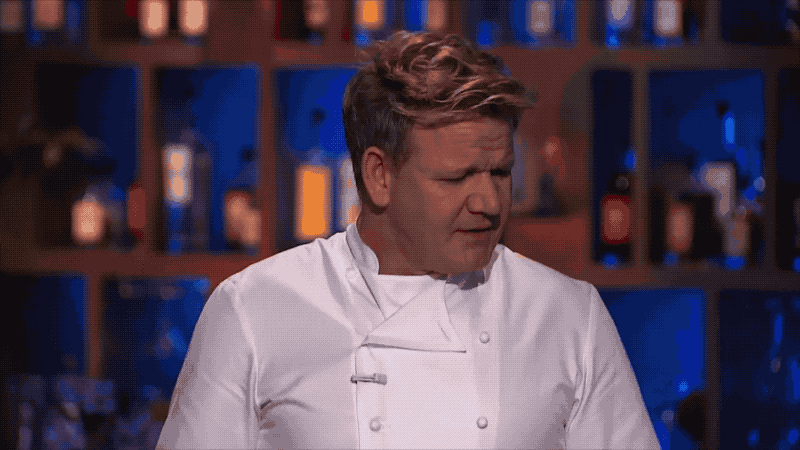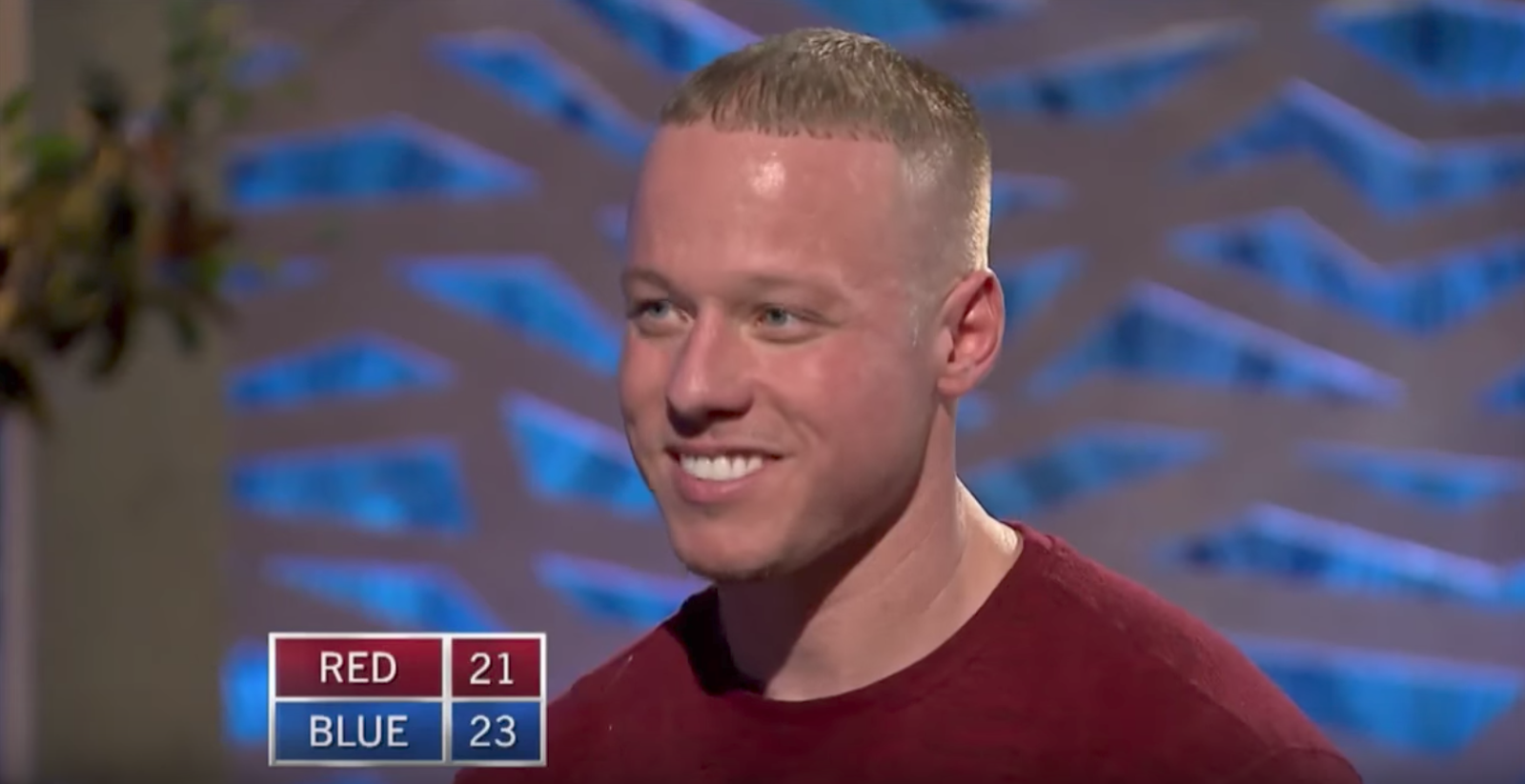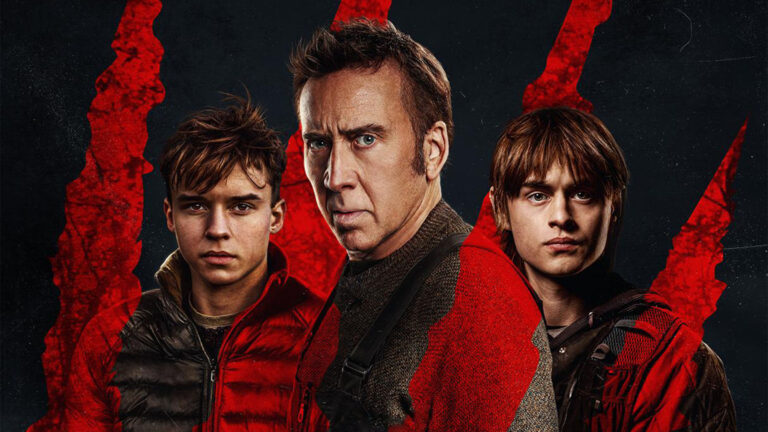As an editor for reality television, I’ve come across some techniques for punching up drama during the edit that transcend the genre and extend to other forms of unscripted productions. In the unscripted television world, editors frequently see a certain note from story producers, showrunners, and executives at both the production company and the network: “Make a meal out of it.” Or, alternately, “make it a moment,” or “make it land.”
This note can refer to any important moment in the story—an individual line, a brief exchange of dialogue, a sudden realization, or the split-second before a physical fight breaks out—and it invariably means the same thing: stretch out the moment, and squeeze out every possible ounce of suspense and drama. (Unless it’s a comic scene, in which case you should squeeze out every ounce of, you know, comedy.)
Sometimes this note will simply require accentuating a moment that is very dramatic (or comedic) already. But at other times, you may be asked to highlight an important revelation that should be “landing” like an anvil, but instead is simply floating almost invisibly past the viewer, like a feather in the breeze.
Either way, it’s critical for all editors to possess a bag of tricks for “making moments” when that note arrives. In fact, if you’re sharp enough to figure out which moments deserve special treatment while you’re still cutting your first version of the scene, you may avoid receiving the note in the first place.

The techniques in this article are very common in reality TV, but they also show up in documentaries and even drama. No matter what you’re cutting, they are important tools in your toolbox.
Which Moments to Emphasize?
Before you can accurately assess which moments deserve some extra love in your edit, you need to make sure you fully understand three things: 1) the story that is actually supposed to occur IN your scene, 2) the earlier story that will LEAD UP TO/SET UP your scene, and 3) the later story that will FOLLOW your scene. Every editor knows to get a firm grasp on the first of these—what is actually supposed to happen in your scene. But sometimes, editors neglect the other two, at their peril.
If you’re cutting a scripted show, you’re in luck—you can learn everything you need to know just by reading your episode’s script. (Though you should also make sure you’re familiar with the content of prior episodes and/or seasons.)
However, unscripted shows are another story—and not just because there is no script to consult. Reality television shows often employ a team of editors, unlike scripted or straight documentary work (for which one or two editors may cut the entire show). As a result, important segments of your scene’s story arc may exist in scenes being cut by other editors, and you may not be aware of how your scene fits into the “big picture” of the season, or even how it fits into its own episode.

You’ll probably rely on a story producer to give you a “stringout” of the scene you’re assigned to cut (a sequence of raw footage cut down to the essentials desired for inclusion), or at the least, detailed direction about what should transpire. But story producers are busy people, and I often find, upon watching raw footage or a stringout, that I haven’t been told everything I need to know. Will this scene be the first time a cast member is learning an important piece of information, or will s/he have heard it before? Does an apparently significant moment in the scene actually “pay off” in a later scene, or does the storyline related to that moment just wither away and die, never to be heard from again?
Without this sort of crucial knowledge, you may find yourself emphasizing moments that will already have been hammered in an earlier scene or that lead to dead ends, or you may fail to recognize genuinely vital moments when they do happen.
The exact nature of “important moments” will be highly dependent on context, and some will be much more obvious to you than others. But as a general rule, always take note when scenes appear to be setting up, significantly advancing, or concluding (“paying off”) a particular storyline; and if you’re unsure how significant a given moment is, make sure you find out before proceeding too far with your edit.
You’ve Identified a Moment. Now what?
Let’s say you’ve identified a good spot in your scene to “make a moment”: a brief dialog exchange on a subject important to the storyline. You know that this exchange should feel tense, but it feels flat and mundane in the raw footage. Now it’s time to reach into your editor’s bag of tricks and actually “make a meal” out of these uninspiring few lines of dialogue.
You have four major tools to work with in crafting your moment, and you may find yourself pulling out one, several, or even all of them on any given occasion:
- Reaction shots
- Added audio, e.g. music or sound effects (SFX)
- Interview bites
- Stylization
Reaction Shots
This is by far the most commonly used trick of the trade. Reaction shots are of course the bread and butter of nearly all editing, whether scripted or unscripted, and unless you’re brand-new to the editing game, you’re doubtlessly well-versed in their use already.
The common wrinkle in unscripted editing is that you may not always have the reaction shot you want or need at a given moment. In scripted material, the need for this reaction shot will be known in advance: the director will most likely shoot something that will work for the story, and you can readily find the takes you need in the lined script. (But read on, scripted editors—on occasion, you still may find that you don’t have the reaction you need!)
With unscripted material, however, you will often find that the cameras have missed the reaction shot you desire, or that a cast member has reacted inappropriately for your purposes. So your job, in that case, is to comb through ALL the footage from the scene and look for shots that seem to reflect the desired moods, regardless of the actual context in which the shots occurred.
If you have enough footage to draw from, you will probably find a shot or two that works surprisingly well. If the choices are scanty, though, you may need to compromise. For instance, if you need a reaction of “shocked silence” from a particular cast member, you could probably make do with a shot of her blinking once or twice, then sitting back (or leaning forward), folding or unfolding hands, and so on—anything to suggest that she is taken aback and that mental wheels are turning.
Avoid the extremes of a static shot on the one hand and an inappropriately large reaction on the other hand. Also, avoid “tipping your hand”: if your silent reaction shot includes a clear view of the back of someone else’s head with jaw flapping at screen left, your use of a cheated shot will be obvious (unless you can blow up and reposition the shot to frame the other person out altogether). If you do your job well, there will be no obvious hints to a viewer that the moment was manipulated.
Poking around on the Internet, I found an example of a “made moment” from “The Real Housewives of New Jersey.” Watch the first 14 seconds of the clip below:
After Siggy accuses Melissa of “acting like trash,” we see a shocked reaction shot of Melissa, then two more shocked reaction shots of other cast members, all played without dialog.
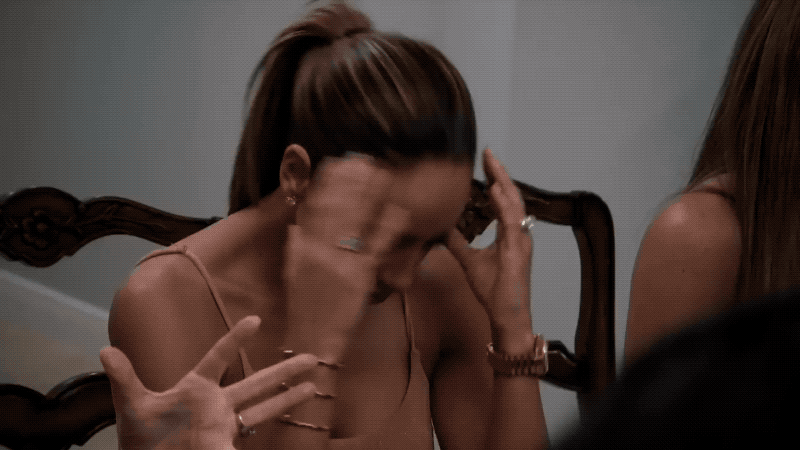
In this particular case, it doesn’t look as though Melissa’s reaction shot was necessarily stolen from much earlier or later in the footage. However, we can see hands gesturing at the bottom left of the frame, which match the action in the preceding shots—a clear indicator that, in the raw footage, the conversation continued without any pause. Probably the editor held on the shot of Siggy as she finished speaking, and then went back a second or two to catch the start of Melissa’s reaction, but dropped out the audio of the ensuing dialogue.
The next two shots of other cast members, which are also played without dialog, may have come from around this same time, or may have actually come earlier or later in the footage; we have no way of knowing. But regardless, by putting all of these shots in sequence and dropping out dialogue, the editor has effectively “made a moment” of the reaction to Siggy’s line.
Added Audio
In many unscripted shows, music is a near-constant presence, and when used properly, music can subtly heighten or even influence viewers’ perception of and reaction to the story they’re watching. But it can, and should, also be used as a form of punctuation to draw attention to important lines and moments, in roughly the same way that written punctuation can. For instance, a “sting-out” (the strong final hit of a music cue) can function much like an exclamation point.
A simple way to “land” a critical line is to follow it with a silent reaction shot, while at the same time either stinging out the cue that’s been playing under the dialog until then (if you had one) or otherwise starting a new music cue. If you’re starting a new cue, ideally it should be one that begins with a strong or dramatic hit, or one that supports having a strong or dramatic hit added to the top. Either way, the sting-out or first hit should land exactly on the cut to the reaction shot.
If multiple cast members are present in the scene, and you can find appropriate reaction shots for them, you can add their shots as well. If you’ve stung-out your previous cue, try adding single SFX hits on each cut to a new reaction. Then, if the next beat of the scene will take the conflict up a notch, try playing a reversed cymbal crash or swell under the final shot, backtimed to peak just as you cut into the continuation of the action and to coincide with the start of your next music cue.

Alternately, if you’ve just begun a new cue on the cut to your first reaction shot, time the following reaction shots so that the cuts land on strong musical beats, which again can be emphasized by adding SFX hits if desired.
Note that, in a show where music is generally “wall to wall” (very little of the show plays without music), the LACK of music under reaction shots will be an especially dramatic choice to help you make your moment. Conversely, in a show where music is used only sparingly, the addition of music will probably be a stronger choice to make a moment stand out.
One thing NOT to do: if you already have a music cue playing before your moment begins, NEVER let it continue all the way through and beyond your moment. Nothing softens the punch of a dramatic or comedic moment like a cue that runs all the way through it. If you absolutely must have the same cue before and after, at least find a point to dramatically (or comedically) drop out the music for a few beats to land your moment, then let it resume.
Let’s continue watching the RHONJ clip we started earlier, up until around the 0:45 mark:
Notice how, at around 0:37, the editor stings out the music cue while (more or less) simultaneously cutting to a stunned reaction shot of Melissa, then of Danielle, before playing Melissa’s response. This serves to “land” the end of Siggy’s outburst (“Trashy trashy trashy!”), as does allowing Melissa’s next line of dialog to play without music before starting the next cue.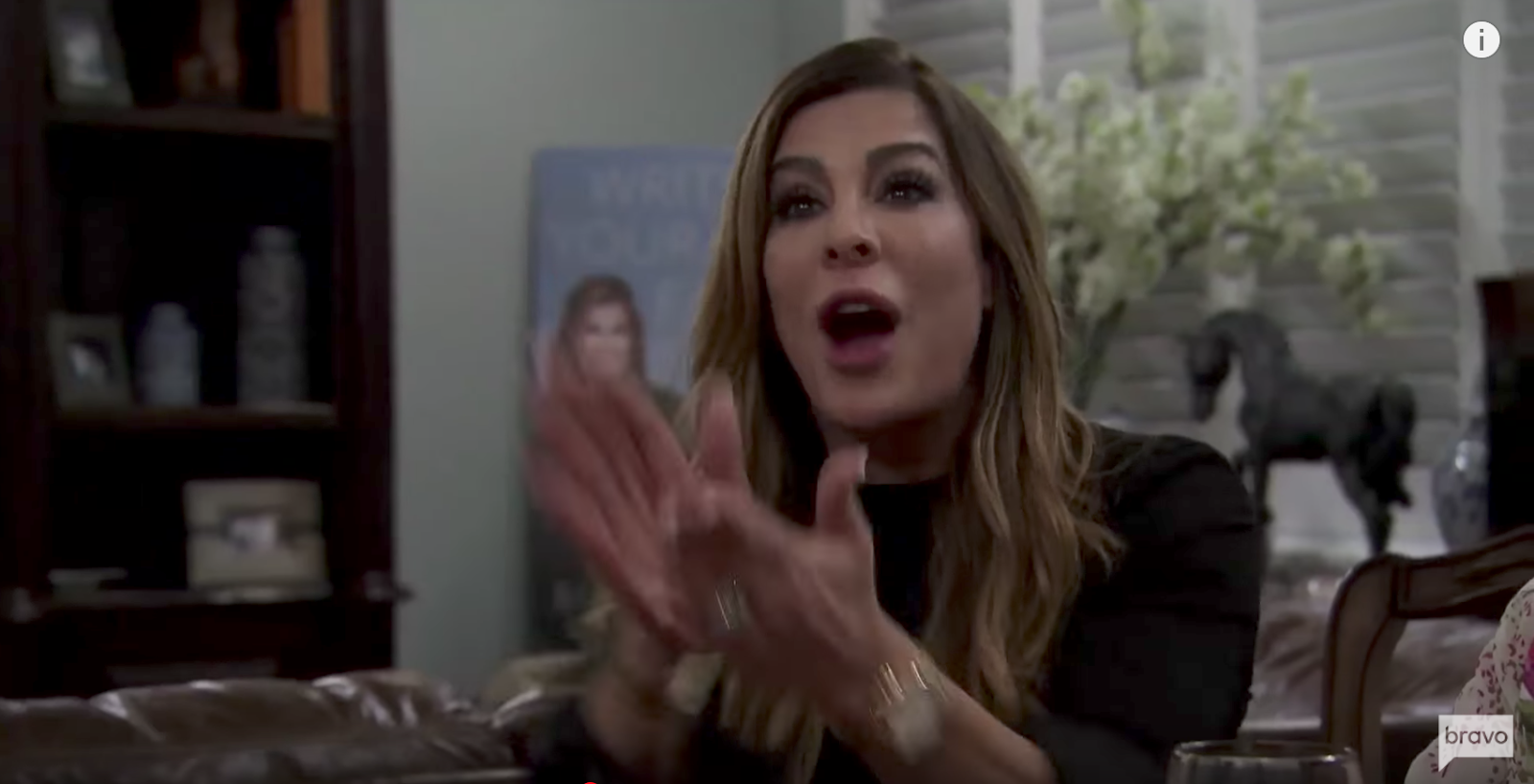

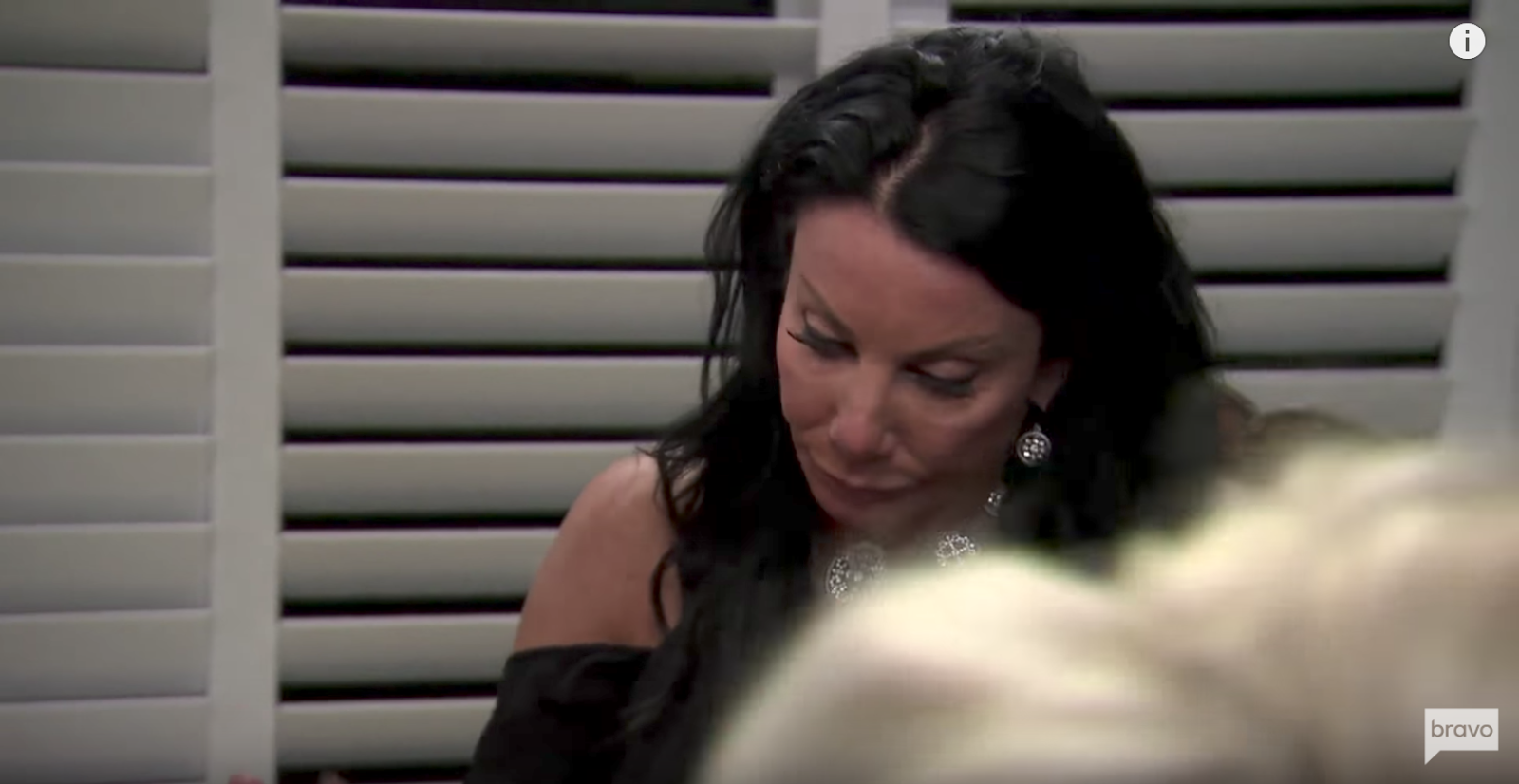
In a competition show like “Hell’s Kitchen,” small moments are being made all the time. As Gordon Ramsay judges each dish, the editor has only a short amount of time to create suspense and “land” the chef’s verdict, be it good (delicious) or bad (blecch). As Ramsay prepares to sample Van’s lobster, the editor begins a tense music cue. Ramsay slices off a piece, makes comments, and takes a bite. The editor then plays a line of dialog from another contestant, followed by a silent reaction shot from another—both of which serve to heighten drama. (As a bonus, the editor is also compressing time, saving us the tedium of watching Ramsay chew and swallow his mouthful and put his fork down.)
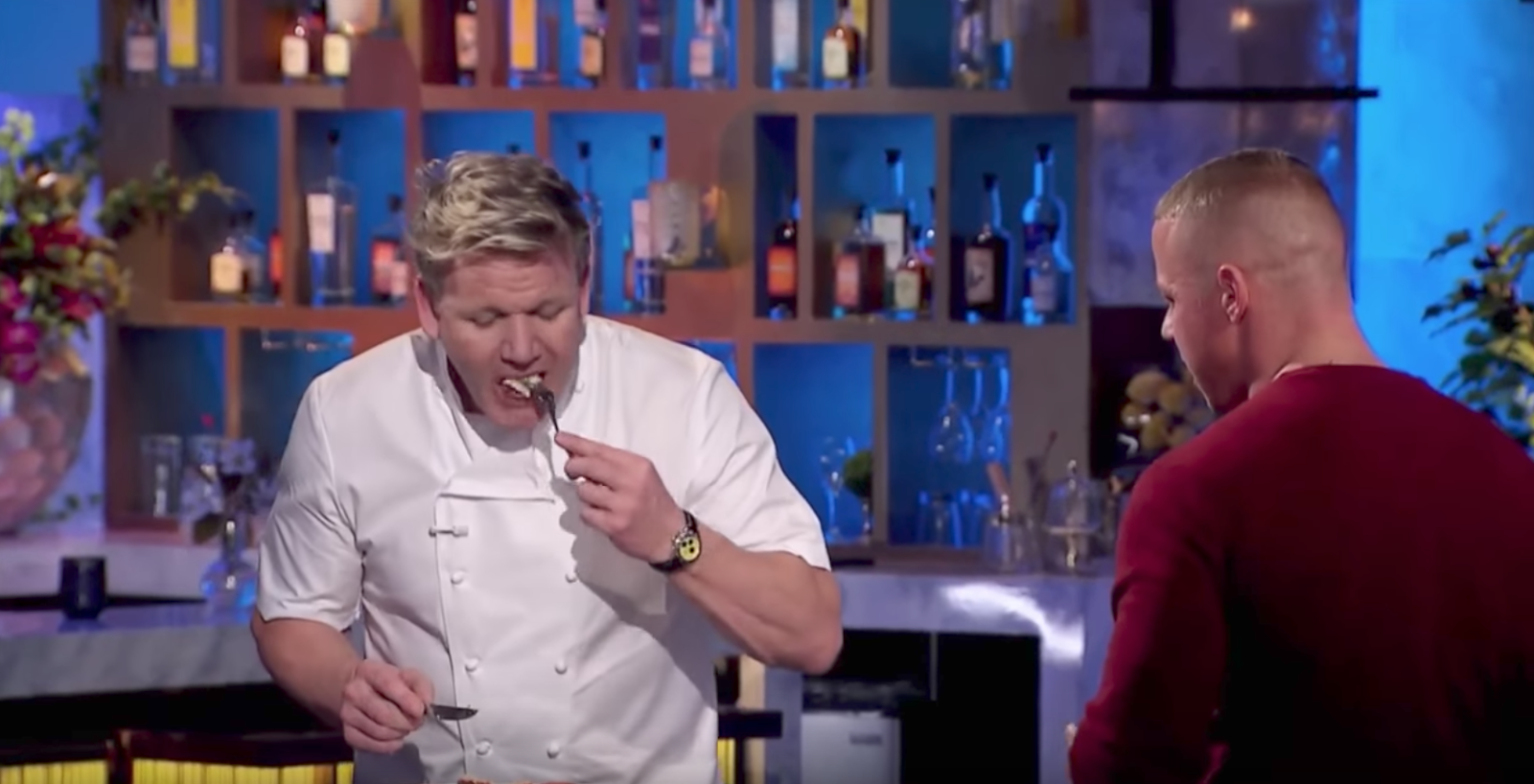
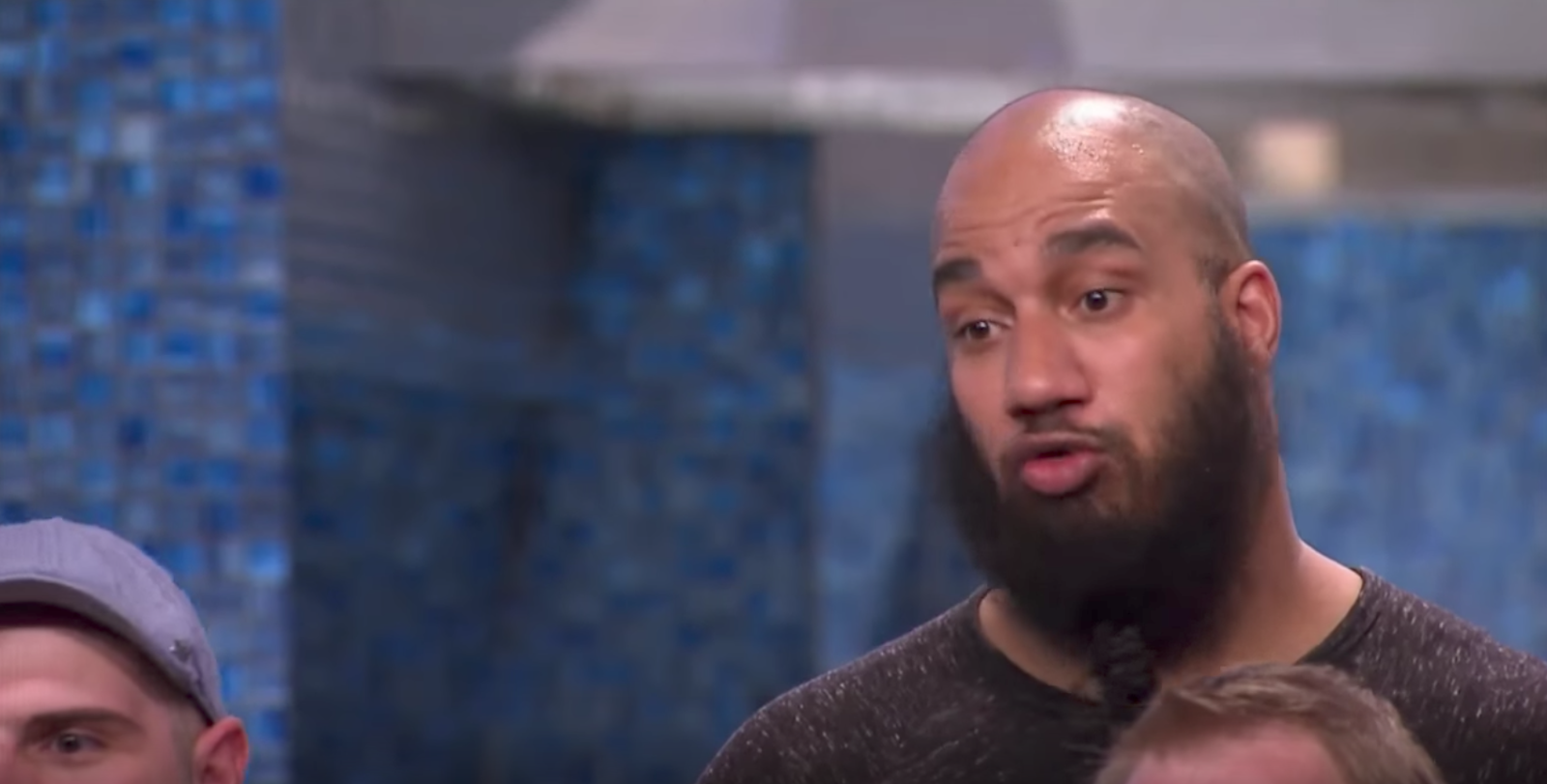

Then Ramsay calls Van’s name, and the cue builds as the editor cuts to a silent reaction shot of Van, then a silent reaction shot of Elise. Finally, the cue stings out as we cut to Ramsay delivering his verdict, without music. The editor, having stuck the landing, syncs the first hit of the next cue exactly on the cut to a reaction shot of the triumphant Van.
Interview Bites
Interview bites, when appropriate, can also be useful in building up to and extending moments you’re trying to emphasize. You may remember a nicely-placed interview bite in our RHONJ clip (Melissa: “There’s two things that you do not call women in Jersey…” at 0:11).
This clip from “Married At First Sight” effectively uses bites (as well as reaction shots and added audio) to “make a meal” of this tense scene between Cody and Danielle, in which they discuss a major issue that’s threatening their new marriage. Let’s watch from 0:28 through the end:
After Cody asks Danielle how she’s feeling about the prospect of getting intimate with him, the editor plays several silent reaction shots back and forth between them, starting at 0:41. Then Danielle replies at length, summing up with “I don’t know.” The editor lands this important line with a reaction shot of Cody at 1:06, synced with a percussion hit. We then get an interview bite from Danielle, which not only gives us Danielle’s state of mind, but also extends our anticipation of Cody’s response. The editor punctuates the bite with a music sting-out at 1:17.
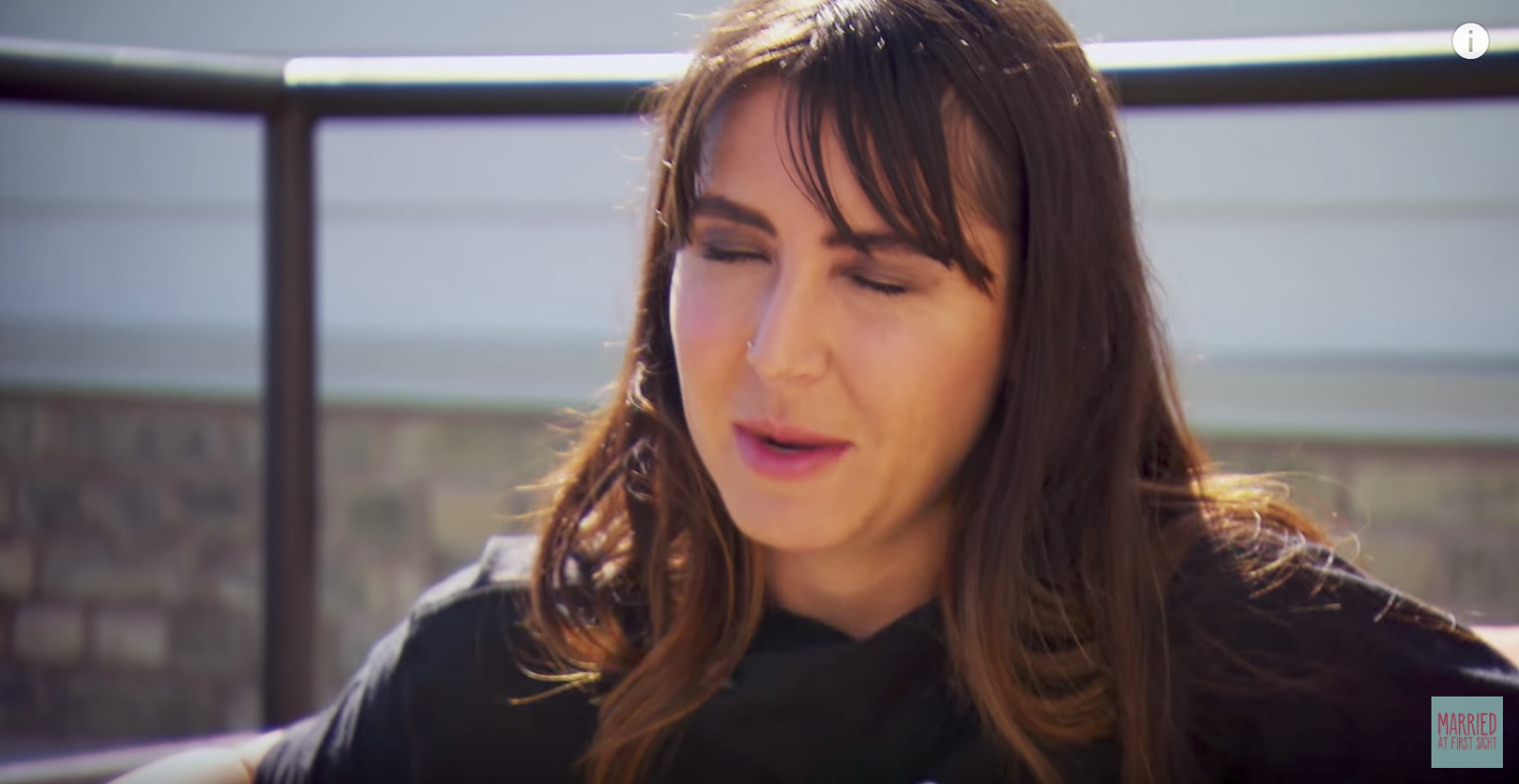
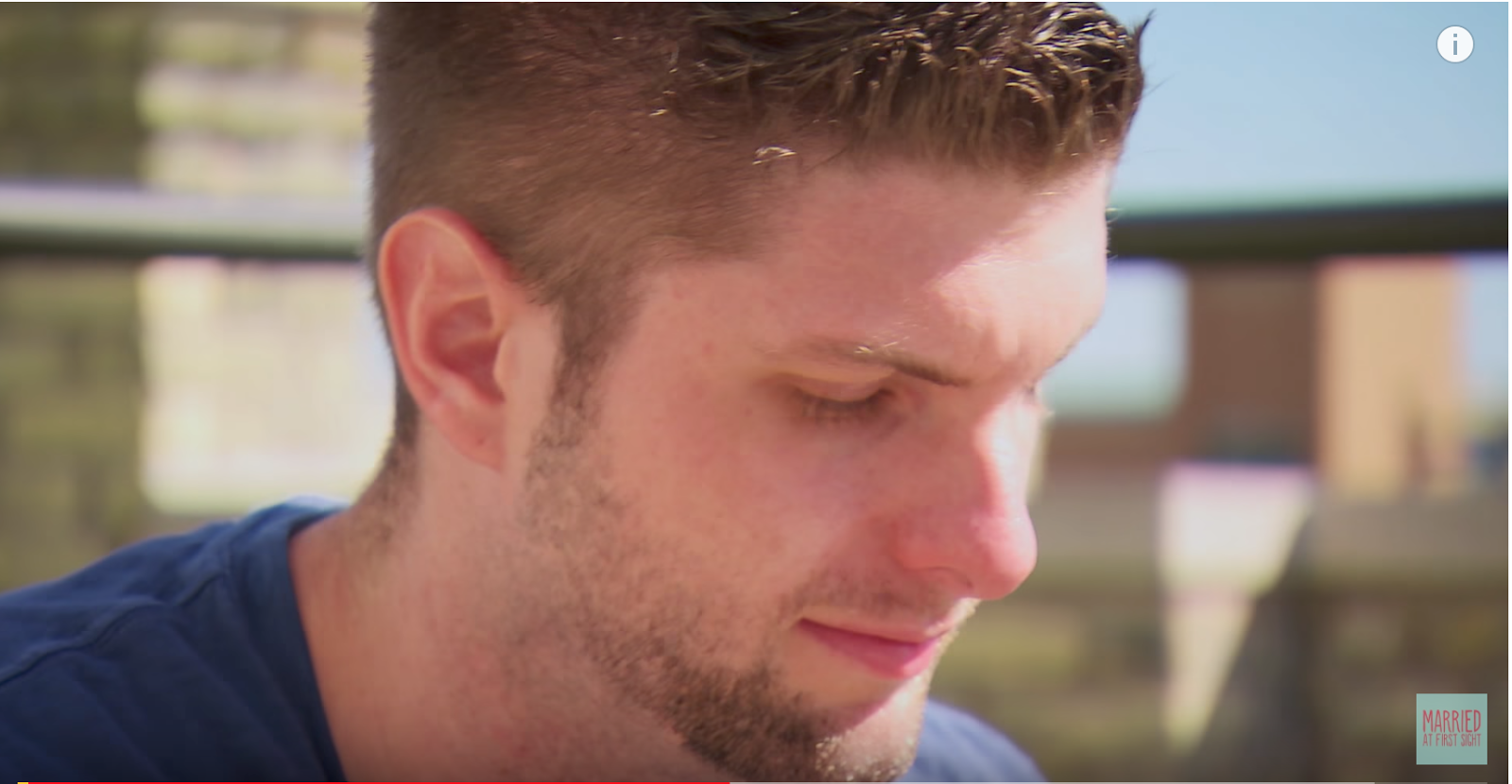
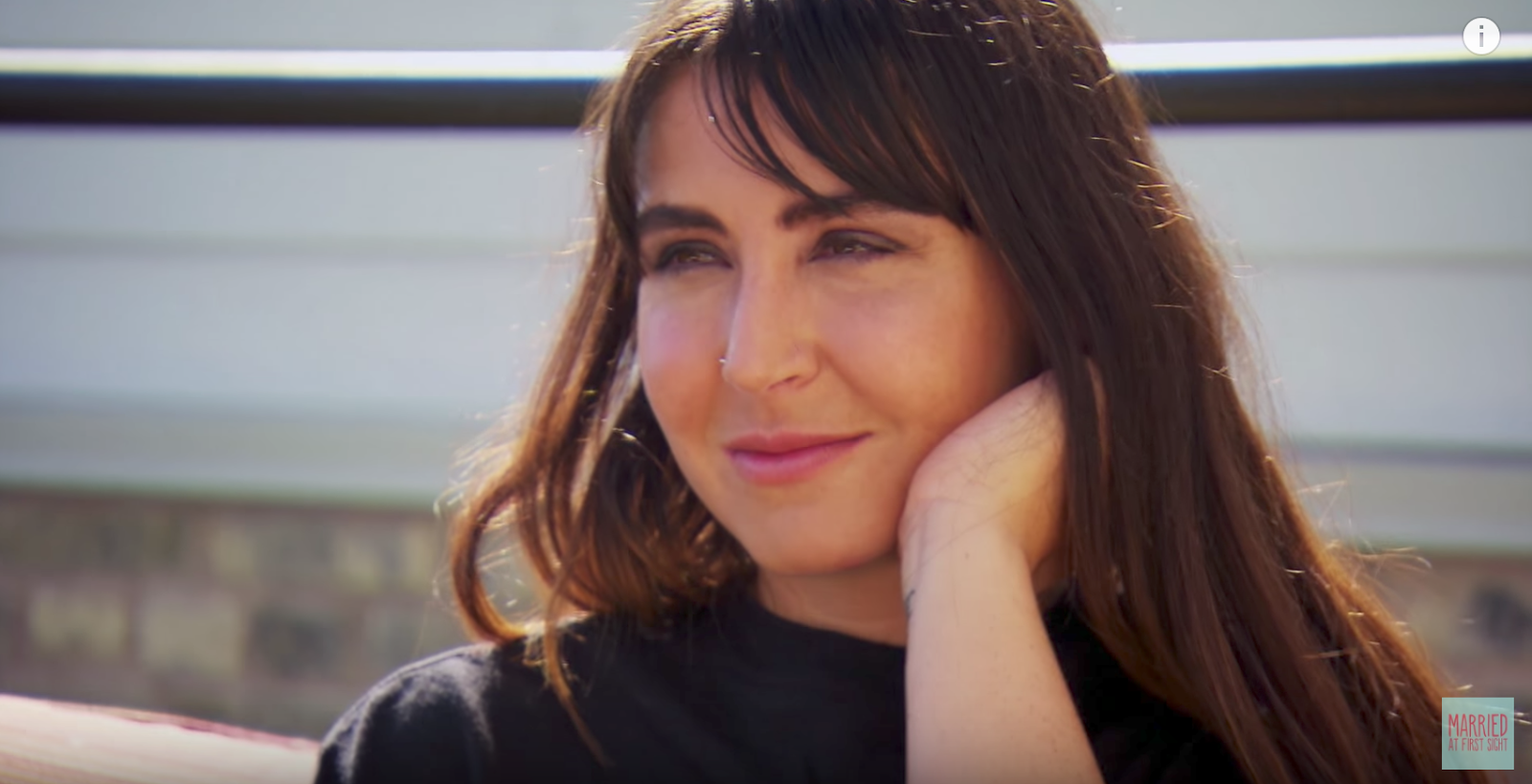
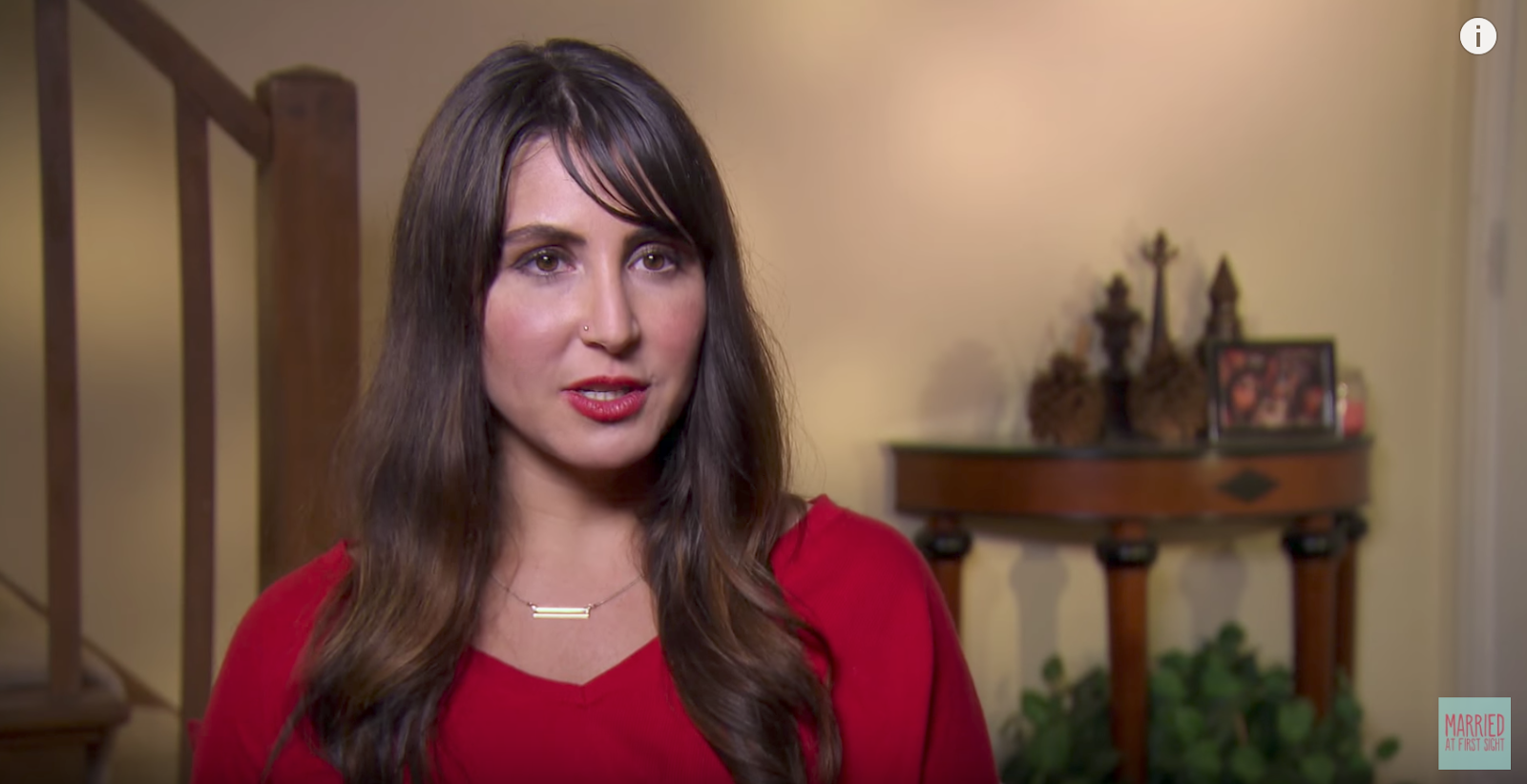
The first line of Cody’s eventual reply—“We’re probably not, like, where I want to be right now”—then plays without music. Cody’s flow of dialog is then audibly interrupted (1:23) to create a dramatic pause. Here, the editor plays three silent reaction shots, augmented by percussion hit and bowed cymbal SFX, and synced with the start of a driving, dramatic music cue. Cody then resumes speaking, but his subsequent lines are similarly interrupted by reaction shots synced with SFX hits, emphasizing the impact of each line.
After Cody sums up (“Divorce is an option”), the cue stings out, and the dangerous moment is extended by an interview bite from Cody, synced with the start of another music cue, which takes us out of the bite and into their final exchange of dialog. As with Danielle’s, Cody’s bite serves two functions: it gives us insight into his thought process, while keeping us waiting to find out how the scene will ultimately conclude.
Stylization
Finally, stylization—use of slow motion, freeze frames, and other overt effects—can be deployed for especially big moments. Because it’s such an obvious manipulation, stylization should be reserved for special occasions (unless your show uses them regularly as a recurring element). Slow motion and freeze frames can be particularly useful when action occurs very quickly and you want to ensure that viewers have ample time to see, and feel, what’s happening.
A scene I edited for season 6 of “Basketball Wives” uses added audio, interview bites, and stylization to emphasize and extend a very brief physical confrontation. Watch the first 47 seconds of the clip below:
In the first part of the scene, in-scene dialog is intercut with narrative interview bites, first from Saniy’yah and then from Tami. Tami’s bites are especially useful in building anticipation, as they are describing how she THOUGHT events would play out, but clearly didn’t. Tami’s second bite ends before she completes her sentence (“And before I could even say anything…”), letting us know that something sudden is about to go down, but withholding the details. The bites also allow us more time to anticipate the impending conflict than the dialog alone might have provided.
The tension builds to the moment before the physical confrontation begins. The music cue ends at 0:27, just as Hazel says “Everybody else is here.” At that point, we cut to a new camera angle as the altercation pops off, and both picture and audio “speed-ramp” down (the speed declines from normal to slow). The cut is also synced with a “sub hit” SFX. We then cut to another angle OF THE SAME ACTION, with the same speed-ramp applied to picture and audio, and with the same sub hit synced to the cut. Then, we cut to a THIRD angle of the same action, again with the same speed ramp (on picture only this time) and the same sub hit. After declining to slo-mo, the third shot and its audio then ramp back UP to full speed. Music has been withheld completely throughout this short passage (0:28 through 0:34). Finally, at 0:34, we have another cut to a full-speed shot as the action continues, coinciding with the start of a new music cue (a bit difficult to hear in this audio mix).
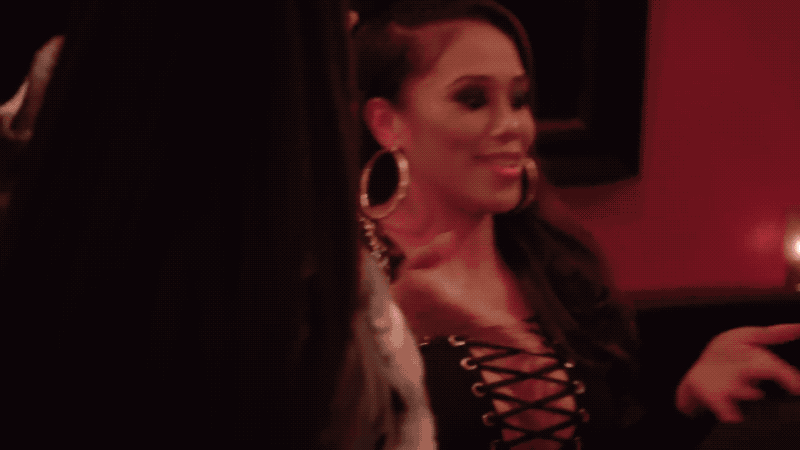
Hopefully, this combination of techniques added drama and made the moment “land” for you, as a viewer, in a way that simply seeing the action play out in real time would not have. Whichever combination of tools you deploy, that is always the goal of “making a meal out of it”: turning a given occurrence in your footage into the strongest and most memorable moment you possibly can.


